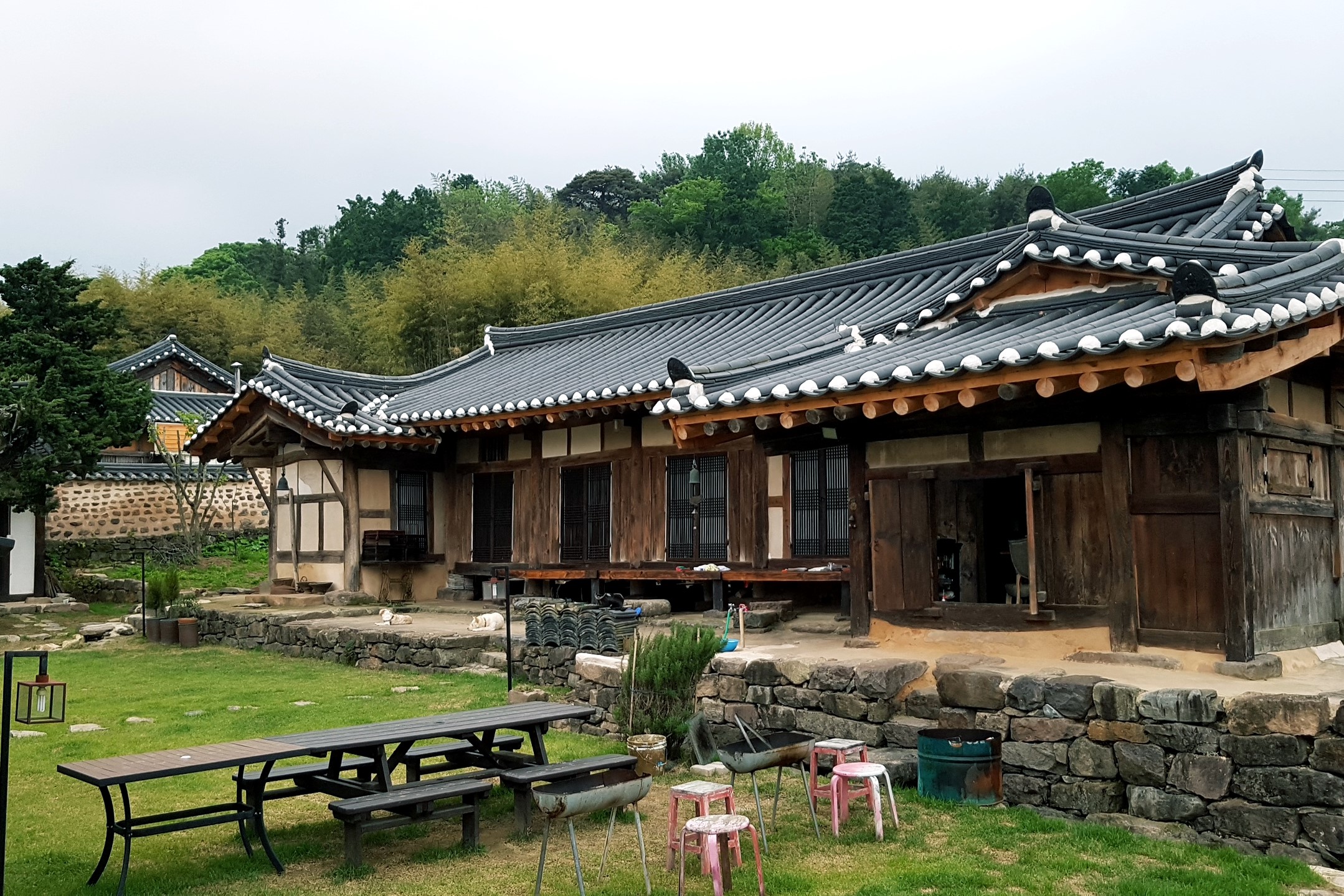YangDongHo Traditional House (Hanok 152)/ 양참사댁(양동호 가옥 / 한옥152)
19.4Km 2025-03-05
24, Darasil-gil, Hwasun-gun, Jeollanam-do
+82-10-9646-5087
Yangchamsadaek (Yangdongho’s former name) or National Cultural Property No. 152 is a traditional hanok accommodation. Dalasil Village, Hwasun, Jeollanam-do, where the house is located, is a town with traditional houses and fields, where interestingly those who have the surname of Jeju Yang live together.
Yangchamsadaek is a typical noble's house in the southern region with the ㄷ-shaped main building and the ㅡ-shaped detached building form the ㅁ shale. It is expected that the main building was built in the 18th century and the detached building at the end of 19th century. In 2013, the current owner has taken over the antique house and started running a hanok stay, and his daughter, Jo A-ae, a curator and culture planner, added modern touches to turn it into a culture complex, Hanok 152. The wide lawn is sometimes rented for music performance, traditional wedding, or outdoor wedding, and other times it serves as a venue of one-day classes for hanbok experience, Korean food experience, etc.
As for rooms, there are four options: big room and small room in Anchae (main building), and Daecheong room and bed room in Sarangchae (detached building). The rooms are decorated with traditional cabinets and folding screens with embroidery, displaying the beauty of an antique house. The main floor, which is much bigger than that of other houses, has been renovated by the owner. The main floor in the main building, with a comfortable sofa and a rug, is modern and luxurious, whereas the main floor in the detached building is cozy with a floor table and Korean cushions. Toiletries are not available in the bathroom but provided upon request to the information desk. Space rental is also available. Various events such as traditional wedding, small wedding, first birthday celebration, 70th birthday celebration, small workshop, or one-day class can be held here. Moreover, traditional hanbok experience is always available at 15,000 won per person. Korean food experience is notified on Instagram and requires reservation. As the cost varies depending on the number of participants and the date, make sure to inquire over the phone.
Also located in the village are Hanjae House (National Cultural Property No. 154) and World Heritage Hwasun Dolmen Site. Note that the Unjusa Temple, famous for the Cheonbulcheontap Pagoda, is a 15-minute drive away.
Gare de Naju
19.4Km 2016-08-08
56 Naju-ro, Naju-si, Jeollanam-do
La gare de Naju se trouve sur la ligne ferroviaire Honam qui dessert les provinces du Jeolla-do. La gare se trouve à Songwol-dong, Naju-si dans la province du Jeollanam-do. L’ancienne gare de Naju, autrefois située à Jungnim-dong, a été le point de départ du mouvement d’indépendance des étudiants de Gwangju en 1929 qui résulte des conflits entre les étudiants coréens et japonais qui transféraient pour Gwangju. Cette importance historique a retardé le déplacement de la gare de Naju, mais avec l’ouverture partielle de la ligne Honam à double voie le 10 juillet 2001, la gare de Naju a été fusionnée avec la gare de Yeongsanpo et déplacée à son emplacement actuel en face de la mairie de Naju. Le bâtiment de l’ancienne gare de Naju était trop vétuste et trop petit pour accueillir tous les passagers de la région, et c’est la gare de Yeongsanpo qui a été utilisée pour pourvoir aux besoins des passagers. Après la fusion des deux gares, tous les trains normaux de la ligne Honam, ainsi que certains trains KTX s’arrêtent à la gare de Naju.


 Français
Français
 한국어
한국어 English
English 日本語
日本語 中文(简体)
中文(简体) Deutsch
Deutsch Español
Español Русский
Русский